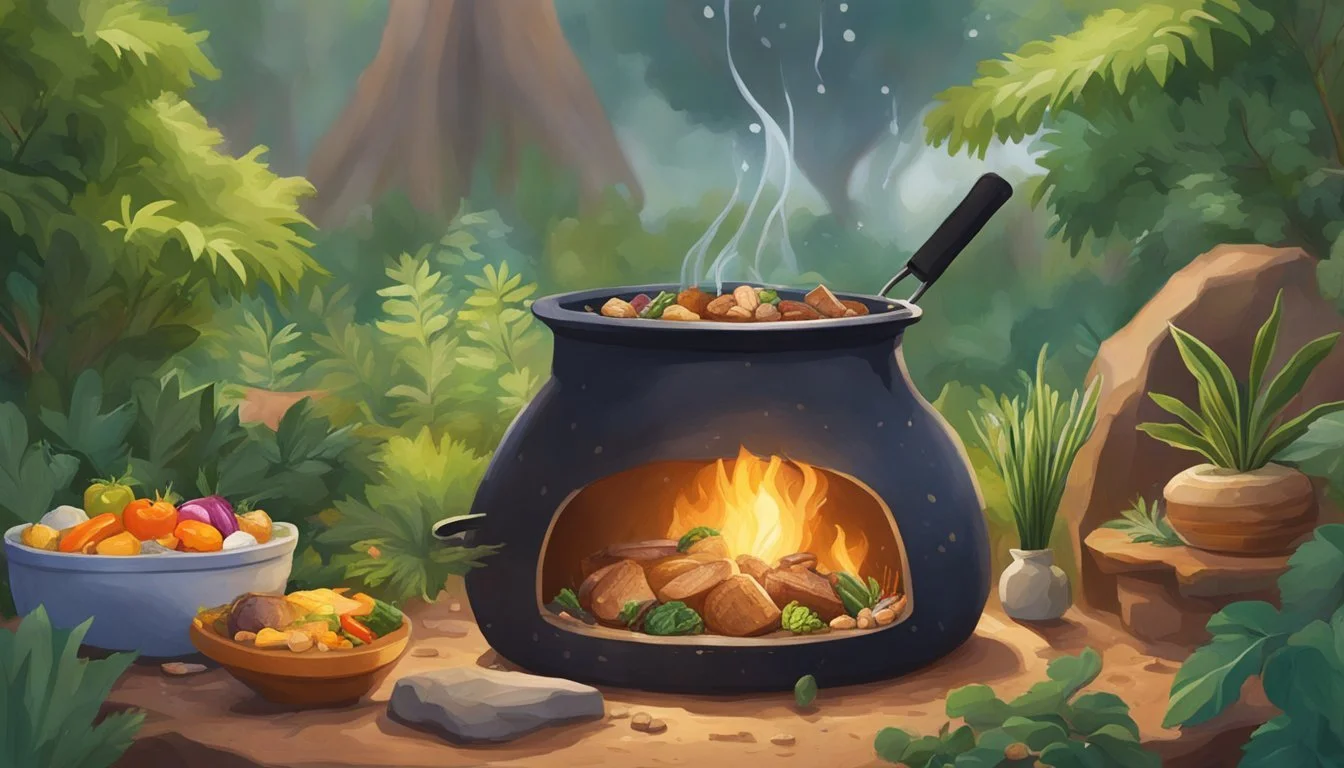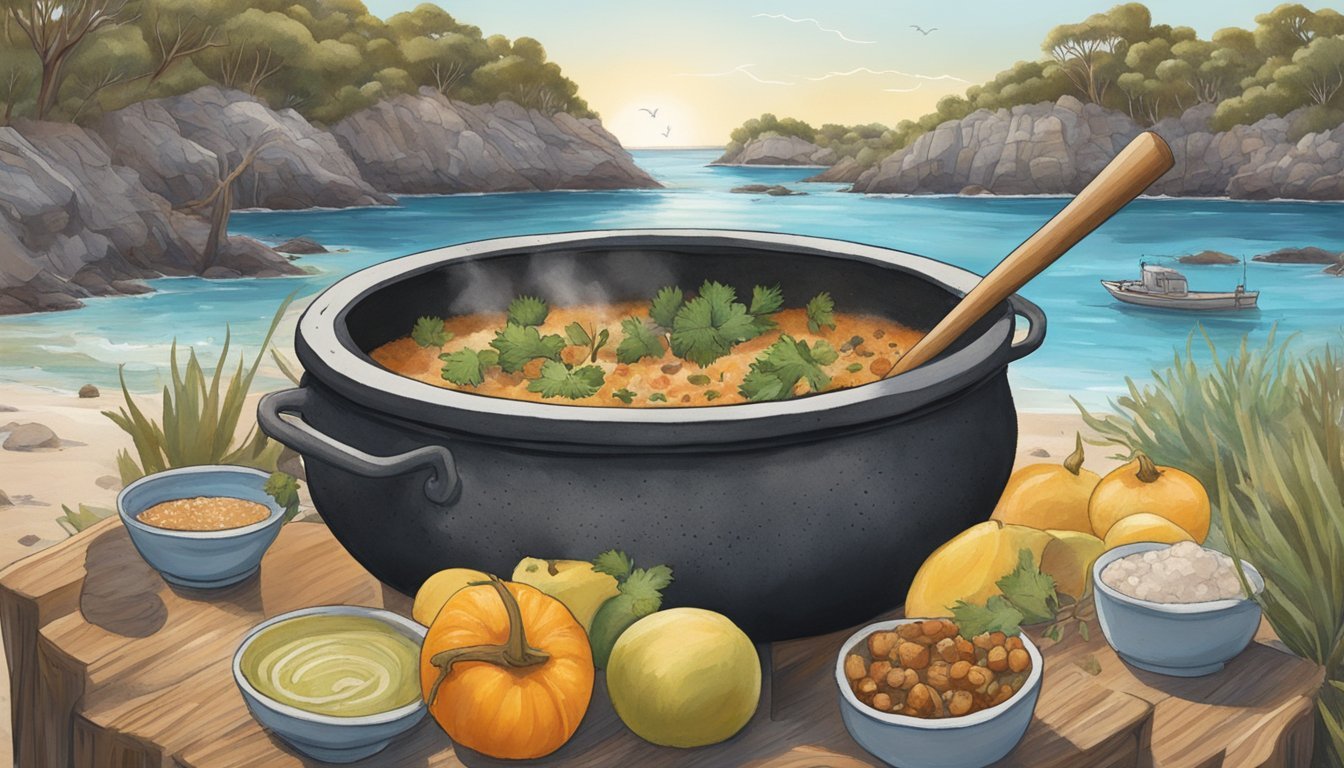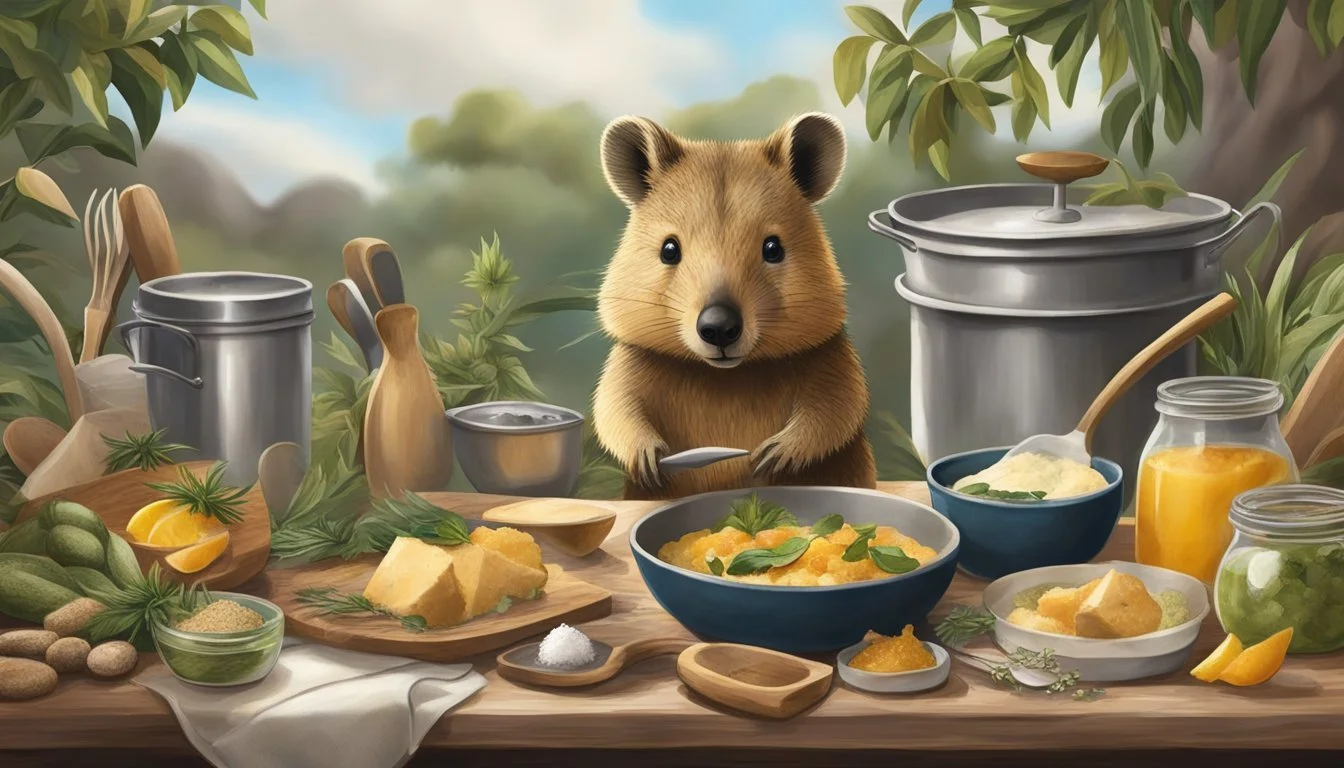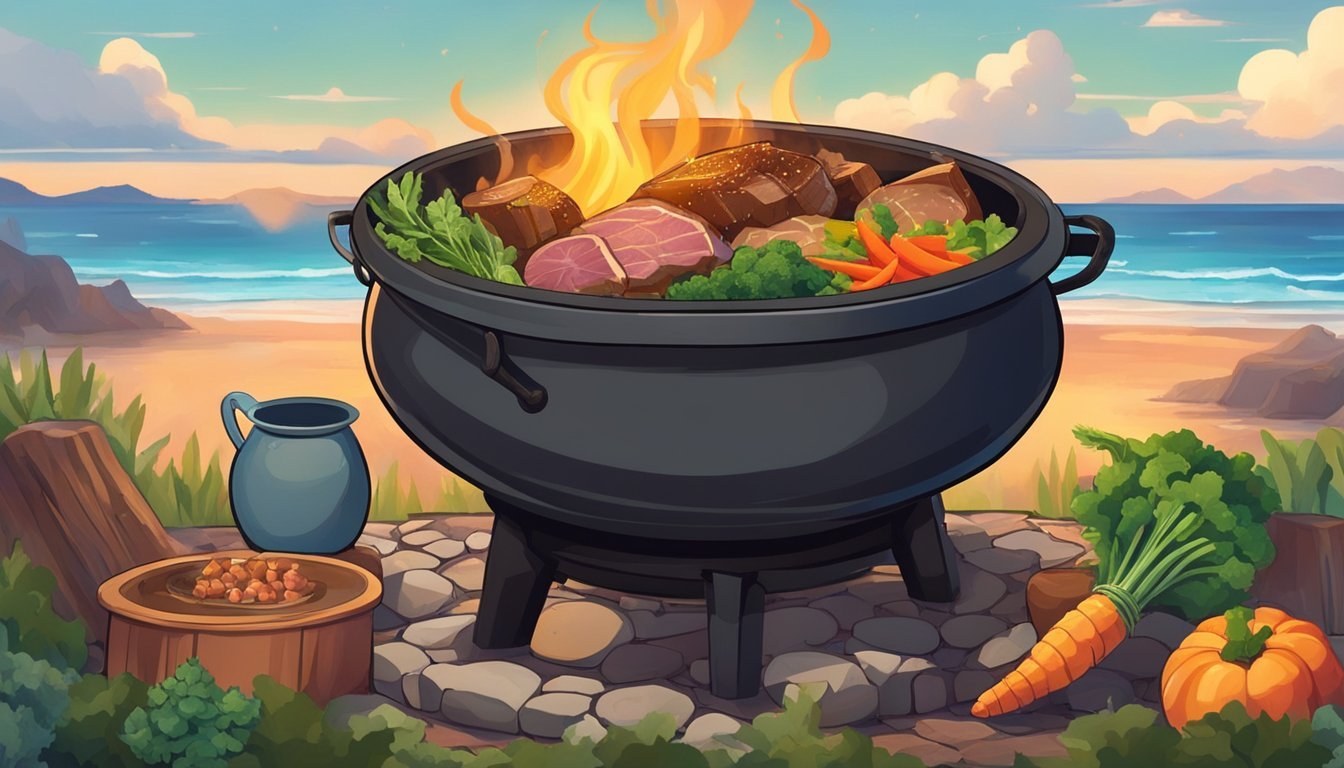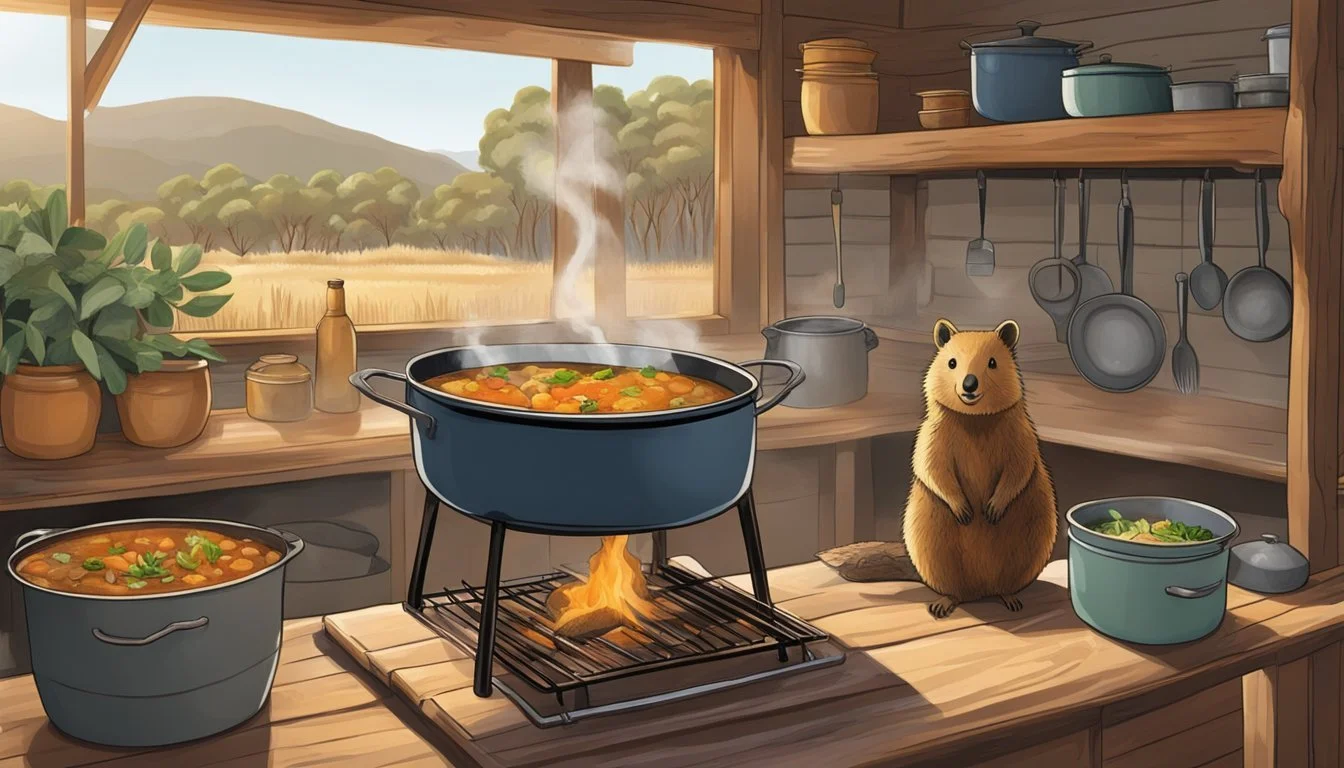Quokka Stew
Exploring Australia's Rare Island Cuisine
Quokka Stew is a dish clouded in mystery and deeply rooted in folklore rather than factual cuisine. This rustic, fabled Australian island dish is often mentioned in tales from Rottnest Island, yet it does not reflect current or traditional culinary practices. The quokka is an endearing marsupial, native to a small selection of islands off the coast of Western Australia, primarily Rottnest Island. They are cherished for their friendly demeanor and photogenic 'smiles', becoming an iconic symbol of the island and a major draw for tourists.
Despite its alluring name, Quokka Stew is not a recognized dish in Australian cuisine. The protection and conservation of quokkas are paramount, as they are a vulnerable species with specific habitat requirements. Conservation efforts on Rottnest Island and other habitats ensure quokkas continue to thrive in the wild. The name 'Rottnest' itself, originally 'Rat's Nest', derived from Dutch explorers' misidentification of quokkas as large rats; however, the islanders and authorities prioritize the protection of the quokka population over any historical misconceptions.
Therefore, Quokka Stew represents an oddity in Australian folklore, serving more as a peculiar anecdote than a culinary reality. The dish embodies the concept of rustic island food but is purely a product of imagination. The legal conservation measures and the public's affection towards these charming animals mean that they remain an integral part of Australia's wildlife, to be observed and appreciated in their natural surroundings rather than featured on the menu.
The Allure of Rottnest Island
Rottnest Island, just off the coast of Western Australia near Perth and Fremantle, stands out as a locale of rich history and a hub for tourism with an array of activities. Its unique blend of past and present invites travelers seeking both enlightenment and adventure.
History and Settlement
Rottnest Island was first known as Wadjemup to the Aboriginal people, representing a significant spiritual connection to the land. Dutch explorers, including Willem de Vlamingh, arrived in the late 17th century, mistakenly identifying the local quokka population as giant rats and naming the island 'Rat's Nest', which evolved to the name Rottnest.
Tourism and Activities
The island’s proximity to Perth and Fremantle makes it a sought-after holiday destination, easily accessible for both locals and international visitors. As a nature reserve, Rottnest offers numerous attractions:
Cycling: Rottnest Island is known for being car-free, making bike rentals a popular way to explore.
Nature: The reserve's pristine landscape and diverse wildlife, including the smiling quokkas, draw nature enthusiasts.
Whether it's stepping back in time or relishing in the island's natural beauty, Rottnest Island captures the hearts of many as a treasured escape from the daily grind.
Quokka: An Overview
The Quokka, scientifically named Setonix brachyurus, is a small marsupial known for its friendly demeanor and photogenic qualities that have garnered social media fame. They inhabit areas within Australia and are a distinctive member of the macropod family which includes kangaroos and wallabies.
Biological Classification
Kingdom: Animalia
Phylum: Chordata
Class: Mammalia
Order: Diprotodontia
Family: Macropodidae
Genus: Setonix
Species: Setonix brachyurus
Quokkas are marsupials, a classification which also includes animals like the kangaroo and wallaby, and retain characteristic features such as a pouch for their young.
Physical Characteristics
Quokkas are small, herbivorous macropods with a stout body, a short broad head, and rounded ears. Adults typically have a body length of 40 to 54 cm and a tail that measures 25 to 30 cm. They possess thick, coarse brown-grey fur and a face often described as smiling, contributing to their perceived pleasant disposition.
Size:
Body Length: 40-54 cm
Tail Length: 25-30 cm
Behavior and Social Structure
Quokkas lead a mainly nocturnal lifestyle, resting during the day and foraging for food at night. Their diet consists primarily of vegetation, making them herbivorous. They are known to be particularly friendly and curious towards humans, which has made them very photogenic subjects for visitors, contributing to their widespread recognition on social media platforms.
Socially, quokkas are not territorial but do form a loose hierarchy when it comes to breeding. Female quokkas carry their offspring, known as a joey, in their pouch for about six months. Post weaning, young quokkas are known to remain close to their mothers until they are fully independent.
Conservation of Quokkas
The conservation of quokkas is critical due to their declining population from various environmental challenges. Efforts to stabilize and grow their numbers involve addressing these issues directly and promoting sustainable practices.
Environmental Challenges
Quokkas, small marsupials endemic to Australia, face several environmental challenges that threaten their survival. The International Union for Conservation of Nature (IUCN) has listed the quokka as vulnerable to extinction largely due to a significant decline in population. Wildfires are particularly devastating: a large fire in 2015 destroyed massive swaths of land home to mainland quokkas, eradicating much of their habitat.
Habitat Loss: Land clearing for agriculture and urban development reduces the quokka's living space.
Predators: Foxes and feral cats prey on quokkas, which results in further population decrease.
Climate Change: This poses a long-term risk, potentially altering habitats and the availability of food sources.
Conservation Efforts
Conservation approaches aim to enhance the quokka population and provide viable habitats for their continued survival.
WWF-Australia is actively engaged in conservation strategies, including:
On-Ground Surveys: To monitor quokka numbers and health.
Protection of Habitats: Especially on Bald Island where a stable quokka population exists.
Control of Predators: Efforts to cull or contain populations of foxes and cats to protect quokkas from predation.
Quokkas on smaller islands, like Rottnest and Bald Island, have fared better than their mainland counterparts due to isolation from many land-based predators. Meanwhile, conservation groups and governmental bodies are continually working to implement measures that safeguard the species from the risks posed by expanding urban areas and environmental cataclysms.
Quokka and Human Interaction
Quokkas have become a notable attraction, drawing attention through social media and increasing tourism. Their interactions with humans are often shaped by their portrayal in media and the resulting human behaviors.
Cultural Impact
The rise of the quokka as a cultural icon can largely be attributed to the trend of taking quokka selfies. Such photos frequently surge on social media platforms, with Instagram showcasing over 66,000 posts tagged #Quokkaselfie. Celebrities such as tennis player Roger Federer have contributed to their popularity by sharing their own quokka selfies. While not directly related to cuisine, this phenomenon has increased tourism to places like pubs and bakeries in quokka habitats due to the curiosity and desire to see these animals. The quokka selfie craze significantly boosts local economies by drawing visitors to quokka-inhabited regions.
Social Media Influence:
Instagram: Amplifies quokka visibility globally.
#Quokkaselfie: Encourages interaction and tourism.
Economic Impact:
Tourism: Spikes in visitor numbers to see quokkas.
Local Businesses: Gain from the increased traffic.
Guidelines for Interaction
When interacting with quokkas, certain regulations are in place to protect these approachable marsupials. Despite being inquisitive and seemingly open to human interaction, it is illegal to touch or feed the quokkas. Camera usage is allowed, but items like selfie sticks must be employed responsibly to avoid disturbing the wildlife. The relevant commission in charge of wildlife conservation emphasizes that while quokkas may appear friendly and unbothered by human presence, maintaining a respectful distance is crucial for their well-being.
Interaction Dos and Don'ts:
Do: Use a camera without disturbing quokkas.
Don't: Feed or touch, as it is prohibited by law.
Legal Consequences:
Illegal Actions: Feeding or touching quokkas.
Penalties: Fines and legal action for non-compliance.
The Recipe and Tradition of Quokka Stew
Quokka stew, a dish steeped in tradition, hails from Australia's island landscapes where it is considered both rustic and rare.
Culinary Roots
Quokka stew finds its origin on the remote Australian islands where early settlers had to adapt their culinary practices to the local fauna. Quokkas, small marsupials native to certain islands, were utilized as a food source. The stew has a rustic character, traditionally prepared with simple, locally available ingredients such as root vegetables and homemade stock. Ingredients are typically simmered over a low fire until tender, embodying a hearty island dish meant to be shared.
Modern Interpretations
Modern renditions of quokka stew often substitute quokkas with other meats due to legal protections and ethical considerations regarding the species. Contemporary chefs aim to conserve the dish’s Australian Island rustic charm by focusing on the fusion of flavors rather than on the original meat. They might use beef or lamb, capturing the spirit of the dish through spices and cooking techniques handed down over generations. This transformed version of the nearly extinct Quokka Stew continues to be an example of adaptive Australian cuisine while honouring its unique culinary heritage.
The Wildlife of Southwestern Australia
Southwestern Australia boasts a diverse range of ecosystems from coastal heathlands to dense southern forests, providing habitats for a unique assembly of wildlife. It is an area where marsupials, often referred to as some of the happiest animals on earth, thrive and interact within their communities.
Ecosystem Diversity
Southwestern Australia showcases a variety of natural habitats. The Kwongan heathlands, characterized by sandy soils and a mix of shrub species, provide a home for numerous marsupials and reptiles. Moving southward, the Jarrah and Karri forests offer a dense woodland canopy ideal for arboreal animals. In these regions, you can find the extensive Southern Forests, which include the Walpole Wilderness Area with its ancient trees and rich biodiversity.
Coastal regions: Sandy beaches and rocky shores lined with salt-tolerant flora.
Heathlands: Low, shrubby vegetation on sandy soils, rich in endemic species.
Forests: Tall eucalypts, such as Jarrah and Karri, dominate with a lush undergrowth.
Species diversity varies with the landscape, ranging from small insectivorous mammals to the larger herbivorous kangaroos that symbolize Australian fauna.
Species Interactions
Interactions among species in Southwestern Australia are a testament to the region's ecological complexity. Marsupials, such as kangaroos and wallabies, navigate the terrain, grazing on native grasses while playing their part in seed dispersal. Among these is the renowned Quokka, often dubbed the 'happiest animal in the world' because of its seemingly cheerful demeanor. These small marsupials are a highlight of the region, particularly on Rottnest Island.
Predator-prey dynamics are evident with birds of prey like the majestic wedge-tailed eagle, and smaller carnivorous marsupials influencing the structure of animal communities. Each species contributes to the ecological balance, whether they are pollinating plants, dispersing seeds, or controlling insect populations.
Herbivores: Kangaroos, wallabies, and quokkas.
Carnivores: Native marsupial predators and birds of prey.
Decomposers: Fungi and invertebrates that break down organic material, enriching the soil.
These ecosystems' ongoing interactions make Southwestern Australia a remarkable testament to Australia's ecological heritage, showcasing wild animals unique to this part of the continent and vital to the region's natural history.
Responsible Practices and Awareness
Responsible tourism and visitor interaction stand as pillars for the protection of Quokkas in their natural habitat. It is essential for the survival of this friendly species, especially on islands designated as nature reserves such as Rottnest Island.
Ethical Tourism
Tourism plays a significant role in Southwest Australia, with the Quokka being a drawcard owing to its seemingly jovial demeanor. Visitors are encouraged to adhere to ethical guidelines to minimize the impact on the wildlife. These include:
Maintaining distance: To prevent stress to the animals, observers should keep a respectful distance.
Feeding prohibitions: As herbivores, Quokkas have a delicate diet, and feeding them inappropriate foods can be harmful.
Photography etiquette: While selfie culture has raised the profile of these creatures, it's crucial to avoid physical contact or disturbing their natural behavior during photography.
Promoting Sustainable Interaction
Nature Reserves: Areas like Rottnest Island function as a habitat and refuge for the Quokka, reflecting a commitment to conservation. Visitors must respect the regulations established by these reserves.
Conservation Efforts: Education about threatened species and the significance of biodiversity is vital. Effective conservation strategies are implemented to sustain Quokka populations.
Supporting Clans: Quokkas often exist in groups known as clans. Preserving the integrity of these social structures is critical for their wellbeing and is a central point of awareness in sustainable tourism.

